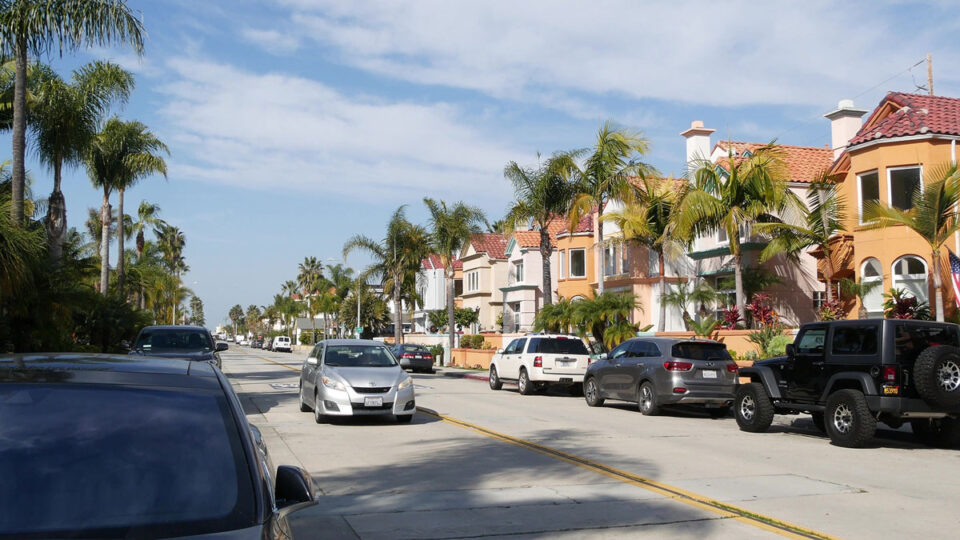OCEANSIDE — The city of Oceanside will meet its state-mandated housing requirements for most of the following decade, according to a staff plan the Oceanside City Council approved in mid-June.
The council approved its Housing Element Update on June 14 for the 2021-2029 planning period or Sixth Cycle. According to state law, all local governments must meet the housing needs of all income levels in their communities by adopting a Housing Element. These elements must be updated every eight years.
The Sixth Cycle Housing Element for local governments in the San Diego Association of Governments (SANDAG) became effective on April 15 of this year and will run until April 15, 2029. Oceanside had until Aug. 15 to adopt its draft Housing Element and submit it to the California Department of Housing and Community Development (HCD).
According to Senior Planner Rob Dmohowski, the plan didn’t need to be entirely complete. He noted staff will continue to work with HCD to address any remaining items and will also make proposed amendments to the plan for public review at later dates.
The primary goal of the element is to identify the housing needs of all Oceanside residents and to make goals and strategies for developing an adequate supply of housing.
SANDAG adopted the state’s Regional Housing Needs Assessment (RHNA) for the region last summer, designating a need of 5,443 units for Oceanside.
Of that amount, approximately 2,574 units (47% of the total housing unit need) are needed for above-moderate income households, 1,268 units (23%) for very low incomes, 883 (16%) for moderate incomes and 718 (13%) for low incomes.
Oceanside received a credit of 2,611 units for units built, entitled or under review since June 30, 2020, leaving it with a remaining need of 2,832 units.
The city is seeking to meet those additional unit needs through infill, redevelopment and mixed-use rezoning along its major commercial corridors.
Without rezoning, the city would only have room for 1,441 new units. The plan is to rezone commercial properties within these high-traveled boundaries like Oceanside Boulevard, Coast Highway and Vista Way to increase the mixed-use allowance from 35 dwelling units per acre to 43 dwelling units per acre.
According to staff, there are 57 sites that could make 4,851 additional units with rezoning, creating a total inventory of 6,292 additional units and an RHNA surplus of 3,460 units.
A “Housing Action Plan” as part of the Housing Element Update details goals and policies the city will implement to address other housing issues during the current cycle.
The plan includes promoting a high-quality urban environment with residential neighborhoods left intact, exploring a possible cap on short-term rentals in an effort to save long-term housing stock, and encouraging inclusionary housing to be built on or off-site for new housing projects instead of paying in-lieu fees, among other goals.
Preserving existing neighborhoods, limiting short-term rentals, building a variety of both small and large homes and addressing overcrowding and housing affordability were some of the many concerns residents brought up to staff at previous public workshops on the Housing Element Update.
“Our staff has done such a good job with the Housing Element by focusing on housing growth along transportation corridors and smart growth sites in a way that meets our RNHA numbers for all income levels while still protecting neighborhoods and revitalization of commercial corridors,” said Oceanside resident Diane Nygaard.
Still, Nygaard cautioned that all of the elements as part of the city’s General Plan Update must work well together, noting the South Morro Hills Community Plan as it stands now could jeopardize the approved Housing Element Update.
Dmohowski presented a draft framework of the South Morro Hills Community Plan to the city’s Planning Commission in March. However, no action was taken and a draft of the plan won’t be prepared until October.
The framework includes an allowance for clustered residential development on parcels 20 acres or larger at a density of one dwelling unit per acre. The idea behind this is to preserve more agricultural land than subdividing farms into 2.5-acre lots would.
Some residents pushed back against the idea of cluster housing, while some of the area’s farmers expressed support.



